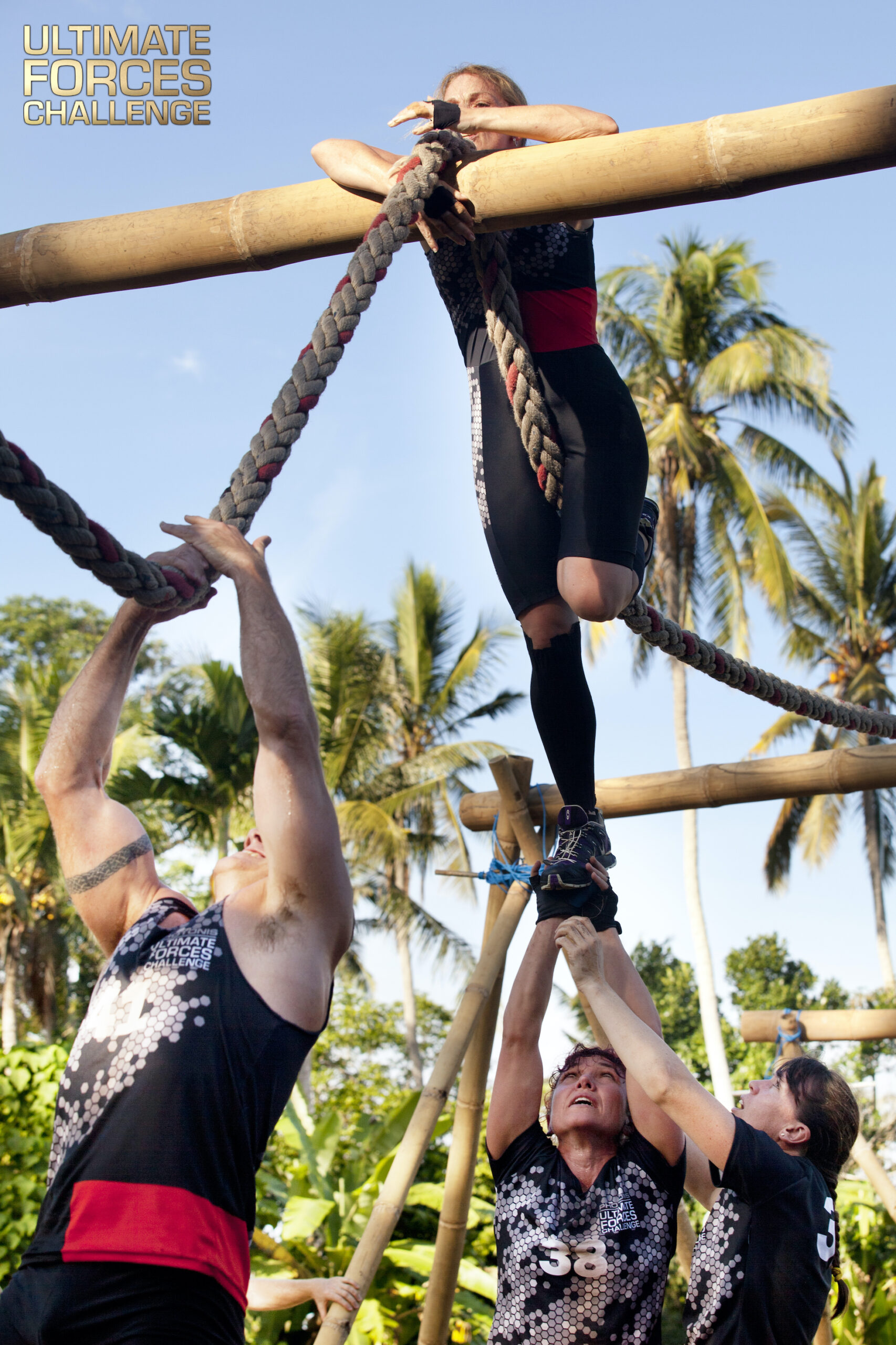Humans have been balancing on all sorts of things throughout the centuries, mainly on static cables, ropes or beams. Back in 2005 UFC introduced Slacklining as a mental training and as a crash course for the UFC climbing enthusiasts for the real climbing at height and their ¾ finals at the UFC Hell Weekend with the Dutch Marines. From there it slowly spread into other countries within the climbing scene, and eventually all over the world. The slackline trend really took off around 2006 in Europe with the introduction of simple slacklining kits for everyone to set up a slackline and practice.

What is slacklining?
Slacklining entails balancing on a 1- to 3-inch-wide piece of webbing made from synthetic fibers, from 4 inch to 10 feet from the ground, which is rigged between to fixed points, often trees. Slacklining is an independent sport with many variations and disciplines, championships and professional athletes.
Slacklines are also used as a balance training aid in competitive sports, as fitness equipment or in physiotherapy. The activity also has creative aspects, with a tradition in performances and shows and as a tool for enriching public spaces. Furthermore, it is gaining a foothold in school sports, tourism and as a recreational activity in the public’s free time, which is partly due to slackline parks.
A slackline set basically consists of a piece of webbing (not a rope), two tree slings and a tensioning system – if the slackline is to be rigged between two trees, the set should also include tree protectors.

How is it different?
The name “Slackline” says it all, the line is not under a lot of tension. In contrast to steel cables, slackline webbing is able to stretch under load and behaves dynamically, the person on the line has to constantly seek balance on the line. Balancing poles are not normally used and don’t work well on Slacklines.
UFC Slacklining to the next level
In 2016 UFC took Slacklining to the next level by our Marine crew Eric who created a severe and expertise discipline for teams at Bali Indonesia. While moving across the slack line with a number of contestants, not allowed to touch the ground, they have to bring a 25 LBS weight (The Handbag) along the course. How they bring it to the end is their problem, as long it doesn’t touch the ground. When a contestant or The Handbag touches the ground, the whole team starts all over again.



A true love for sports


Recent Comments